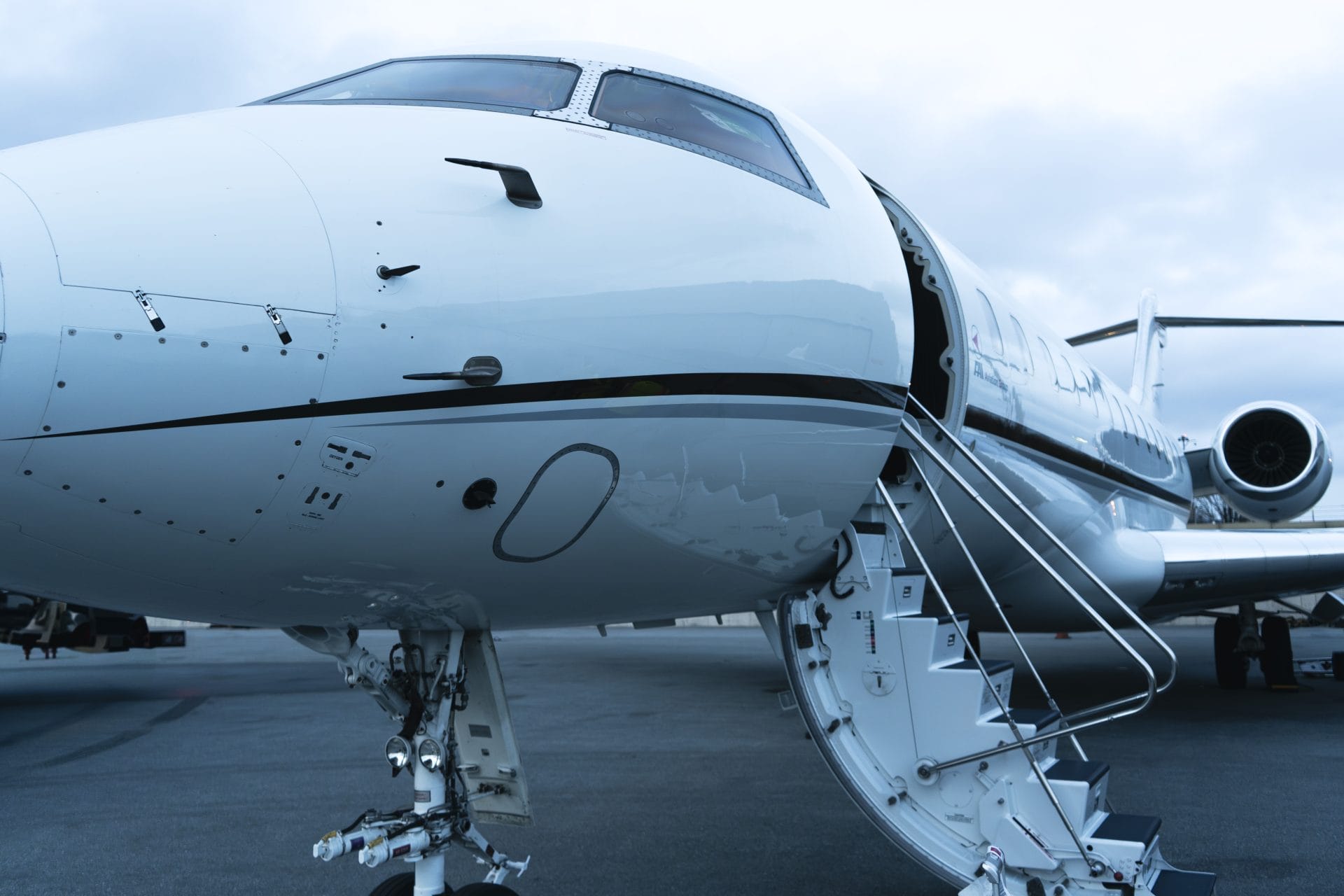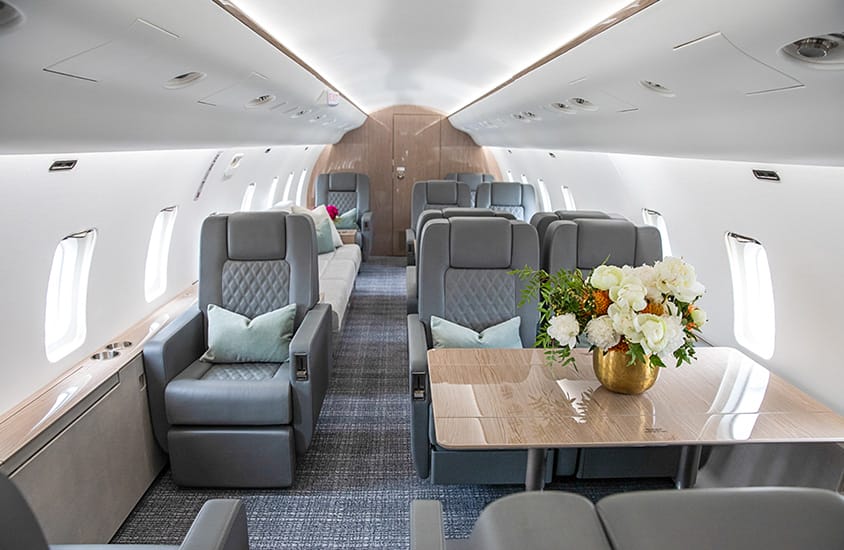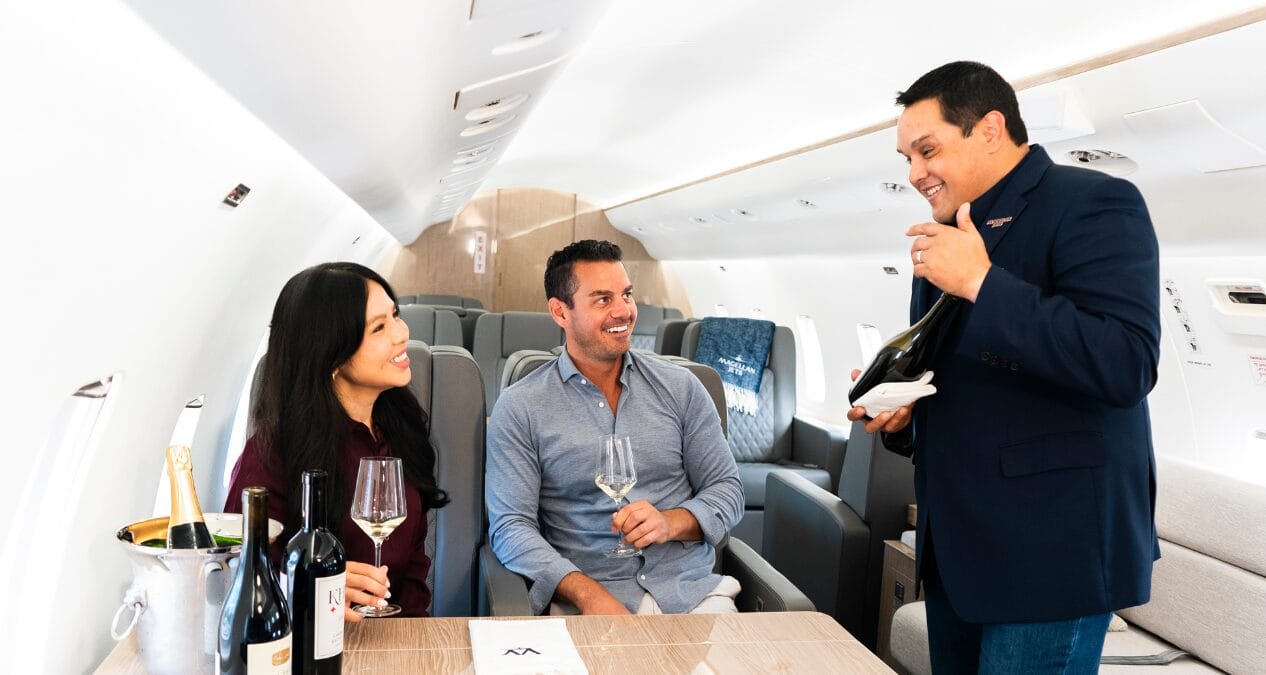Flying private internationally opens up a world commercial airlines can’t touch. You’re not limited to major hubs or rigid timetables. Do you have an important conference center in Switzerland to reach? Need to connect multiple cities across Asia in three days? International charter is likely the best solution for you or your business.
Let’s walk through everything you need to know about international private jet travel in 2025.
Overview Of International Charter Flights

International charter flights are private flights that cross national borders. You book the entire aircraft, choosing when to fly, where to land, and often how to configure the cabin for your journey.
Here’s what makes international charters different than standard travel: You’re accessing over 5,000 airports globally. For comparison, commercial airlines reach about 500. This could mean landing 20 minutes from your meeting instead of two hours away at a major airport.
Behind every international flight is serious regulatory framework. U.S. operators need Part 135 certification. ICAO compliance ensures your flight meets safety requirements in all 193 member countries. Your crew handles permits, clearances, and diplomatic requirements while you focus on your journey.
Key Benefits For Global Travelers
Safety And Reliability
Top charter operators undergo rigorous safety audits. ARGUS Platinum and Wyvern Wingman certifications mean independent auditors have examined maintenance logs, pilot records, and safety protocols and have given their stamp of approval.
International routes require particularly experienced crews. Charter captains typically log 9,700+ hours before commanding transoceanic flights. They know Moscow’s permit quirks, Singapore’s arrival procedures, and how to navigate unexpected weather over the Pacific. When you’re crossing oceans, experience matters. Always ensure that your private aviation provider takes pilot time in type into account when sourcing your flight.
Flexibility And Comfort
International charter means that a change of plans mid-journey is no problem at all. Extend your Paris meeting by three hours. Depart Beijing at midnight to arrive fresh in Los Angeles. Add a fuel stop in Iceland to pick up a colleague. Your aircraft adapts to your needs.
Cabin configuration becomes personal choice, depending on your chosen aircraft. Configure seats for sleeping on red-eyes or face-to-face meetings during day flights. Bring specialized equipment, confidential documents, or temperature-sensitive cargo. Select specific wines, accommodate dietary restrictions, or travel with pets. The freedom and flexibility afforded to you is unmatched.
Aircraft Classes For International Journeys

Light And Super Midsize Jets
Light jets handle shorter international hops perfectly. The Citation CJ4 connects Toronto to Cancun or Los Angeles to Vancouver. Range caps around 2,000 nautical miles, ideal for regional international routes.
Super midsize jets take you further. The Challenger 350 crosses the Atlantic without stopping and can travel from New York to London in seven hours. Stand-up cabins mean you arrive refreshed, not cramped. Baggage compartments easily accommodate golf clubs, ski equipment, and wardrobes for extended stays.
Intercontinental missions call for heavy jets. The Gulfstream G650ER flies New York to Dubai nonstop, or London to Los Angeles without refueling.
The Global 7500 redefines long-haul comfort. Four distinct living spaces include a permanent bedroom and full kitchen. Conference areas with high-speed internet keep teams productive across time zones.
Cost Factors And Booking Tips
Positioning And Fuel Costs
Where your aircraft starts affects pricing significantly. A London-bound jet already in New York costs less than repositioning one from California.
Fuel stops can save money on ultra-long routes. Atlantic crossings often tech-stop in Shannon or Reykjavik. Pacific routes might pause in Anchorage or Honolulu. Adding 90 minutes saves thousands versus weight penalties from maximum fuel loads. Call your Private Aviation Advisor today to get a quote for your international flight.
Taxes And Handling Fees
International fees add up quickly. European airports charge landing fees based on aircraft weight, meaning larger jets pay more. Customs processing varies by country, with expedited clearance available at premium facilities.
Multi-day journeys include crew costs. Two pilots plus cabin crew need hotels, meals, and ground transport. Weather delays or schedule changes can extend these expenses. Some nations require special permits for crew overnights or charge additional fees for weekend arrivals.
The Magellan Difference For International Journeys
Choose a partner who understands global operations for your next international Charter flight. Magellan Jets’ asset-light business model offers a unique advantage for border-crossing flights. Unlike providers tied to specific fleets, we select the perfect aircraft for each international mission without bias.
Our Preferred Network includes only the top percentage of operators worldwide, each meeting rigorous international standards. When crossing oceans or navigating complex foreign airspace, this selective approach ensures you’re flying with crews who have proven transoceanic experience and local knowledge of destination requirements.
Multi-country itineraries require precise coordination. Our Private Aviation Advisors craft routes considering fuel stops, crew duty limitations, and customs availability at each destination. From arranging ground transportation in Tokyo to securing preferred FBO access in Paris, every element receives personal attention.
Frequently Asked Questions About International Charter Flights
How much does an international charter flight cost?
Charter pricing depends on aircraft size and mission length. Smaller jets suited for regional international flights cost less per hour than heavy jets built for ocean crossings. Total expenses include flight time, positioning, international fees, and crew costs (subject to additional costs as well depending on the specific flight).
Transatlantic flights typically need 7-8 flight hours plus ground fees. Pacific crossings run longer, potentially requiring fuel stops. Your specific route, chosen aircraft, and timing determine final costs more than any standard formula.
Request an International Charter Quote here.
Which airports can handle international charters?
Business aviation airports streamline private arrivals. London Biggin Hill, Paris Le Bourget, and Geneva’s dedicated FBO terminal process private flights faster than main commercial terminals. Customs, immigration, and ground services operate steps from your aircraft.
Regional airports transform travel efficiency.
Moving Forward With Confidence
Ready to explore how international charters can transform your global travel? Talk to a Private Aviation Advisor about crafting your perfect international journey.







